-
DARPA announces VTOL X-Plane Phase 2 design
For decades, aircraft designers seeking to improve vertical takeoff and landing (VTOL) capabilities have endured a substantial set of interrelated challenges. Dozens of attempts have been made to increase top speed without sacrificing range, efficiency or the ability to do useful work, with each effort struggling or failing in one way or another. DARPA says that its VTOL Experimental Plane (VTOL X-Plane) program aims to overcome these challenges through innovative cross-pollination between fixed-wing and rotary-wing technologies.
-
-
Four African innovators selected for engineering innovation prize
Following an open, competitive, application process which saw entries from fifteen countries in sub-Saharan Africa, twelve African entrepreneurs were chosen to receive a package of six months of business training and mentoring from the U.K.’s Royal Academy of Engineering. The four finalists showing the greatest promise have now been chosen, and are in with a chance to become the overall winner. Each will receive at least £10,000 with the grand prize of £25,000 to be awarded at a ceremony in Cape Town on 1 June. A low-cost sustainable water filter system to provide clean and safe drinking water, and a service that allows African mobile phone users to switch easily between multiple mobile networks are among the four African innovations selected by the Academy.
-
-
Applications solicited for funding of next-gen first-response technologies
DHS Science and Technology Directorate (S&T) says that applications are now being accepted through 9 March 2016 for the NextGen First Responder Technologies solicitation, an opportunity for joint-funding by DHS S&T and their partners in the Israeli Ministry of Public Security.
-
-
DHS, DoE, U.S. Army test operational effectiveness of technology solutions
Understanding the true potential of a new technology comes with the opportunity to deploy it in a real life, urban environment scenario against adaptive adversaries. Recently, the Department of Homeland Security (DHS) Science and Technology Directorate (S&T) collaborated with the U.S. Army to assess the operational effectiveness of twenty-five technologies through practical application.
-
-
Making sure that if extraterrestrial observers called, somebody hears
The question of contact with others beyond Earth is hardly hypothetical, as several projects are under way, both to send signals from Earth and to search for signals that have been sent directly or have “leaked” around obstacles, possibly travelling for thousands of years. As scientists step up their search for other life in the universe, two astrophysicists are proposing a way to make sure we do not miss the signal if extraterrestrial observers try to contact us first.
-
-
Suicide bomb detector moves close to commercialization with Sandia engineer’s help
On the chilling list of terrorist tactics, suicide bombing is at the top. Between 1981 and 2015, an estimated 5,000 such attacks occurred in more than 40 countries, killing about 50,000 people. The global rate grew from three a year in the 1980s to one a month in the 1990s to one a week from 2001 to 2003 to one a day from 2003 to 2015. R3 Technologies and a group of other small businesses are developing a way to prevent suicide attacks by detecting concealed bombs before they go off. R3 found a partner in Sandia sensor expert JR Russell who has helped bring the company’s Concealed Bomb Detector, or CBD-1000, close to commercialization over the past two years.
-
-
New sensor rivals dogs in detecting explosives
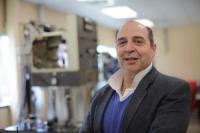
Dogs have been used for decades to sniff out explosives, but now a University of Rhode Island scientist and his team have come up with another way to detect bombs: sensors. The scientist has developed a sensor that can detect explosives commonly used by terrorists. One of these explosives is triacetone triperoxide, or TATP. Triacetone triperoxide has been used by terrorists worldwide, from the 2001 “shoe bomber” Richard Reid to the suicide bombers who attacked residents of Paris in November. The explosive is relatively easy to make with chemicals that can be bought at pharmacies and hardware stores, attracting little attention from authorities.
-
-
De-icing concrete to improve roadway safety
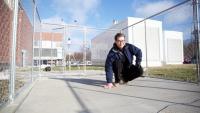
Researchers have developed a concrete which de-ices itself by adding a pinch of steel shavings and a dash of carbon particles to a traditional concrete recipe. Though the newest ingredients constitute just 20 percent of the otherwise standard concrete mixture, they conduct enough electricity to melt ice and snow in the worst winter storms while remaining safe to the touch.
-
-
Technologies enabling automated lookouts for unmanned surface vessels sought
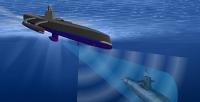
DARPA’s Anti-Submarine Warfare (ASW) Continuous Trail Unmanned Vessel (ACTUV) program seeks to develop a new type of unmanned surface vessel that could independently track adversaries’ ultra-quiet diesel-electric submarines over thousands of miles. ACTUV program invites input so future unmanned ships could operate safely near manned maritime vessels in all weather and traffic conditions, day or night.
-
-
Snake robots learn to turn by emulating real sidewinders
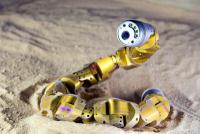
Researchers who develop snake-like robots have picked up a few tricks from real sidewinder rattlesnakes on how to make rapid and even sharp turns with their undulating, modular device. Working with colleagues at the Georgia Institute of Technology and Zoo Atlanta, they have analyzed the motions of sidewinders and tested their observations on snake robots. They showed how the complex motion of a sidewinder can be described in terms of two wave motions — vertical and horizontal body waves — and how changing the phase and amplitude of the waves enables snakes to achieve exceptional maneuverability.
-
-
What makes a “smart gun” smart?

Throughout the 20-year-long discussion of “smart guns,” the topic has been a lightning rod for debate between pro- and anti-gun lobbies. But too often, there isn’t substantive knowledge of the underlying technologies, their appropriate use and their design limitations. Personalized weapons technology can make a contribution to reducing death and injury from accidental or unauthorized weapons use. It is not a panacea, but it can be an option for gun buyers to ensure their weapons never fall into the wrong hands. Smart guns are not science fiction and could be a commercial reality much sooner than later.
-
-
Making cleaner fuel cells
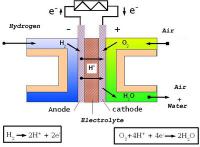
There is a near unanimity in the scientific community that the average temperature on the planet is rising and this is happening because of the increased concentration of carbon dioxide in the atmosphere. Radically redesigning virtually all technological infrastructure is not possible without an acceptable alternative to internal combustion engines: either electric accumulators and electric motors, or fuel cells with electric motors. Fuel cells themselves will not solve the problem of rising temperatures on the planet, but they are part of a possible solution. Researchers have developed ion-exchange synthetic membranes based on amphiphilic compounds that are able to convert the energy of chemical reactions into electrical current.
-
-
Transforming deadly chemicals into harmless dirt
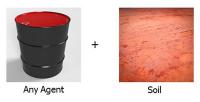
Destroying bulk stores of chemical warfare agents is a challenge for the U.S. and international community. Current methods of eradication, such as incineration or hydrolysis, are not fully agnostic, require significant amounts of water and create hazardous waste that requires further processing. DARPA’s Agnostic Compact Demilitarization of Chemical Agents (ACDC) program recently awarded two contracts to develop prototypes of a transportable disposal system able to convert dangerous chemicals into safe output, such as harmless soil, using minimal consumables and creating no hazardous waste.
-
-
Pairing seismic data, radionuclide fluid-flow models to detect underground nuclear tests
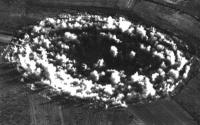
Underground nuclear weapon testing produces radionuclide gases that may seep to the surface, which is affected by many factors. These include fractures in the rock caused by the explosion’s shock waves that create pathways for the gas to escape plus the effect of changes in atmospheric pressure that affect the gases’ movement. Scientists have developed a new, more thorough method for detecting underground nuclear explosions (UNEs) by coupling two fundamental elements — seismic models with gas-flow models — to create a more complete picture of how an explosion’s evidence (radionuclide gases) seep to the surface.
-
-
Locust-inspired robot traverses rocky terrain, assists in search and rescue

Since the 1980s, advanced robotic platforms have provided assistance to crisis intervention teams in the wake of man-made and natural disasters. The objective of such robots, in various sizes and shapes, has been to intervene where humans cannot and send life-saving data to rescue teams in the field. A new, locust-inspired robot, can jump eleven feet high — more than twice the height of similar-sized robots — and cover a horizontal distance of 4.5 feet in one leap. The researchers believe the robot will perform well in search-and-rescue missions and in reconnaissance operations in rough terrain.
-
More headlines
The long view
New Technology is Keeping the Skies Safe
DHS S&T Baggage, Cargo, and People Screening (BCP) Program develops state-of-the-art screening solutions to help secure airspace, communities, and borders
Factories First: Winning the Drone War Before It Starts
Wars are won by factories before they are won on the battlefield,Martin C. Feldmann writes, noting that the United States lacks the manufacturing depth for the coming drone age. Rectifying this situation “will take far more than procurement tweaks,” Feldmann writes. “It demands a national-level, wartime-scale industrial mobilization.”
How Artificial General Intelligence Could Affect the Rise and Fall of Nations
Visions for potential AGI futures: A new report from RAND aims to stimulate thinking among policymakers about possible impacts of the development of artificial general intelligence (AGI) on geopolitics and the world order.
Keeping the Lights on with Nuclear Waste: Radiochemistry Transforms Nuclear Waste into Strategic Materials
How UNLV radiochemistry is pioneering the future of energy in the Southwest by salvaging strategic materials from nuclear dumps –and making it safe.
Model Predicts Long-Term Effects of Nuclear Waste on Underground Disposal Systems
The simulations matched results from an underground lab experiment in Switzerland, suggesting modeling could be used to validate the safety of nuclear disposal sites.
